100 Inspiring Australians
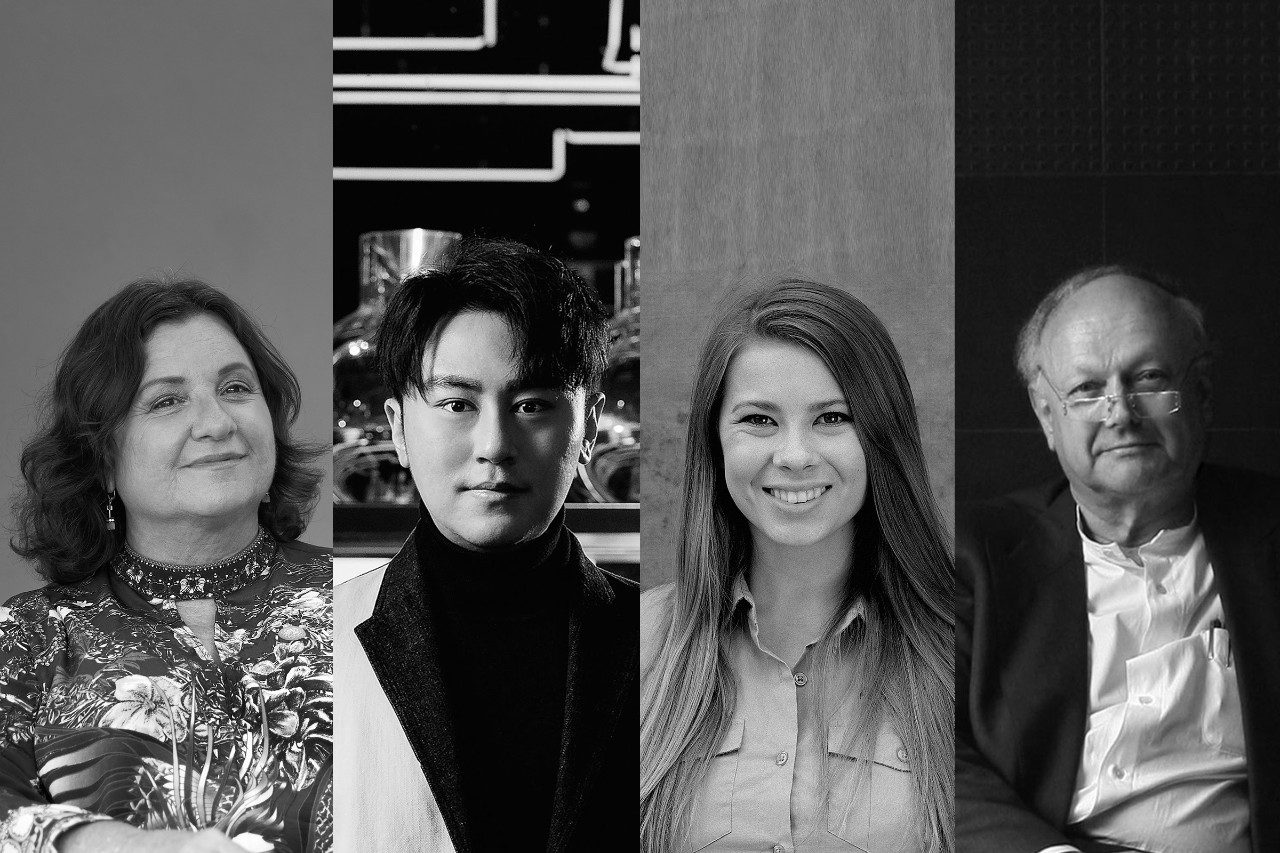
To celebrate the Qantas Centenary, we’re honouring 100 extraordinary people who epitomise the spirit of Australia in 2020.
Game-changers and quiet achievers, big names and local heroes – these leaders represent the best of our country. The criteria for inclusion? The 100 must identify as Australian and be impacting our nation in a positive way, whether they’re reshaping their industry, leaving a legacy or doing something innovative and inspiring. These are our first 23 inspiring Australians.
* * *
1/100: Judith Neilson
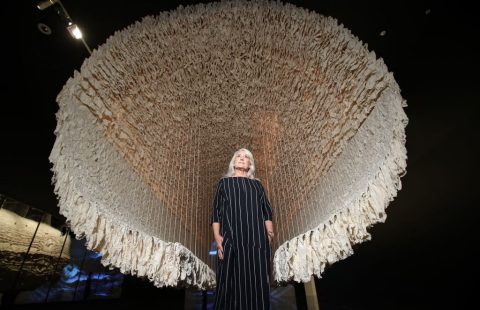
Image credit: Getty/Scott Barbour.
Founder and owner of Sydney’s White Rabbit Gallery and founder of the Judith Neilson Institute for Journalism & Ideas
On contemporary art: “It’s how individuals make sense of the world around them. In doing so they help all of us see things that might not be immediately apparent. It encourages us to think differently and consider other points of view. Contemporary art often tells stories that no-one would ever read – it’s a document of the day.”
* * *
2/100: Louis Li
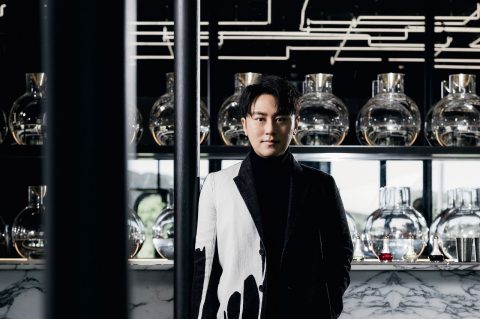
Image credit: Rick Liston.
Hotelier and entrepreneur
The son of Chinese property developers, Li is an unlikely hero. He moved to Victoria in 2007 to study film before designing Mornington Peninsula hotel Jackalope at the age of 25 in 2007. The hotel is so unusual it could have been dismissed as an over-the-top fantasy. Instead it’s garnered coveted awards and praise from locals.
* * *
3/100 & 4/100: Robert and Bindi Irwin
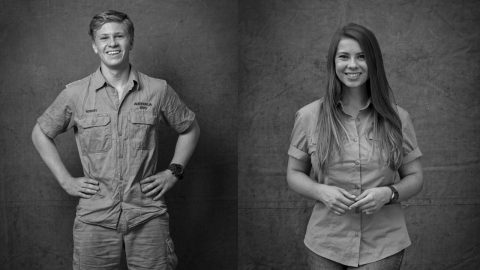
Image credit: Russell Shakespeare.
Wildlife conservationists
Robert: How much of what you do is continuing the legacy of Mum and Dad and how much is striking out on your own?
Bindi: When I was little I’d say, “I want to be just like Dad when I grow up.” He was a superhero, a living hurricane. That’s why I love him so much. But while we’ve carried on in Mum and Dad’s footsteps, they always encouraged us to become our own people.
Bindi: You’re 16. How would you like to see the world change by the time you’re 26?
Robert: I’d hope for more consideration for unsustainable human population growth. It’s the overarching problem with any conservation issue: the demand for specific resources with mining, say, or traditional medicine; or habitat degradation to plant crops. Hopefully in 10 years we’ll be having a wider discussion that takes into consideration the needs of both people and wildlife.
* * *
5/100: Rinaldo Di Stasio
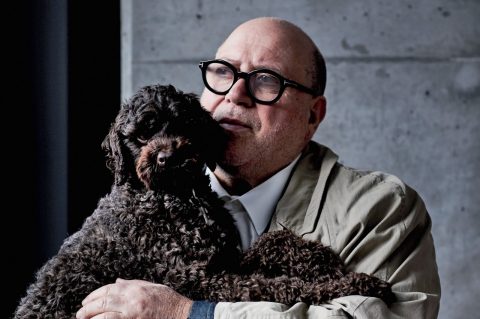
Image credit: Mark Roper.
Restaurateur
Ronnie Di Stasio is Melbourne’s answer to the Medicis. He’s a Renaissance man celebrating the nexus of food, wine and art. A bon vivant, vineyard owner and proud Italophile, his St Kilda institution, Café Di Stasio, has been an unofficial home to politicians, artists, business leaders and glitterati for more than 30 years; a place where white-jacketed waiters set the mood and champagne corks mark the ceiling. “Passion does not come in vanilla flavour,” says Di Stasio, the son of Italian immigrants who grew up in working-class Thornbury. Eating carpaccio at Café Di Stasio or sipping a Negroni next-door at Bar Di Stasio, added in 2013, are true Melbourne experiences. In 2019 he opened Di Stasio Città, a slick, art-inspired restaurant on Spring Street in the CBD, now dubbed the city’s “Milan end”.
* * *
6/100: Abigail Allwood
Geologist, astrobiologist and principal investigator on NASA’s Mars 2020 rover mission
Allwood's latest project, Mars 2020, takes off from Cape Canaveral, Florida, in July. The mission? To determine if Mars has ever contained microbial life. “The job of the science team is to select samples and we’ll have six instruments at our disposal – one of them PIXL, which I’m in charge of – to help make decisions,” says Allwood, who’s based at the NASA Jet Propulsion Laboratory in Pasadena, California. If the mission is successful, it won’t be the first time Allwood has made history. Between 2003 and 2005 she discovered the oldest signs of life on our own planet: microbial fossils dating back nearly 3.5 billion years inside geological formations called stromatolites in Western Australia’s Pilbara.
* * *
7/100: Glenn Murcutt
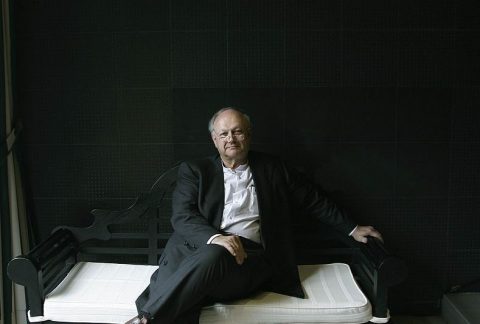
Image credit: Getty/Mariana Silvia Eliano.
Architect, lecturer and author
Comedian and design buff Tim Ross: “I once wrote Glenn Murcutt a quick note asking a question. A week later, the most delightful and considered two-page handwritten letter arrived in response. A thoughtful and considered man, who still designs by hand and doesn’t use a computer, Glenn, now 83, creates buildings that reflect our identity as well as build on it. What makes him a truly great Australian architect? He not only understands the bush but loves it. I cherish Glenn’s letter like a piece of art.”
* * *
8/100: Yasodai Selvakumaran
Humanities teacher and professional practice leader
The Sri Lanka-born daughter of Tamil refugees who moved to the NSW Riverina in 1988, Yasodai Selvakumaran was just a preschooler when the seeds were planted for her teaching career. She recalls her feeling of frustration at not being able to speak English. Almost three decades later, the now 32-year-old is harnessing that same power to assist her own students at Rooty Hill High School in Sydney’s western suburbs, as well as mentor more than 200 of her fellow teachers. In 2019, she was the only Australian to make the final short list of the Global Teacher Prize, which awards US$1 million (about $1.45 million) to an outstanding educator.
* * *
9/100: Dina Petrakis
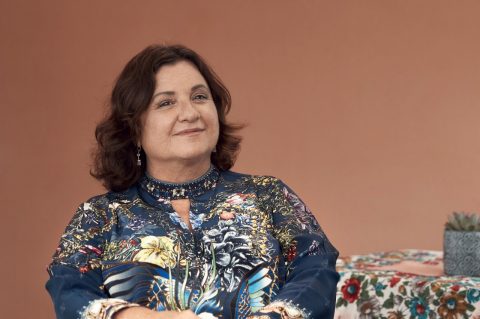
Image credit: Damian Bennett.
Global manager of Ignite Small Business Start-Ups
“People talk about helping refugees and asylum seekers become independent and confident but Ignite does more than that – we give them agency,” says Dina Petrakis. It’s a subtle yet crucial distinction of the Sydney-based refugee business initiative the 57-year-old established in 2013 for not-for-profit organisation Settlement Services International. “We not only help people find financial independence but also their voice so they’re able to represent themselves, their families and their communities.” Ignite’s one-to-one model pairs an entrepreneur with a facilitator for anywhere from six weeks to three years. “We coach, support, advocate – whatever needs to be done to start their business,” she says.
* * *
10/100: Brendan Cullen
Rural mental health advocate
Although having a yarn had never been a problem for Brendan Cullen, there was something he was struggling to verbalise in 2015 when he climbed the steps of the local hospital to ask for help. A combination of factors led the Broken Hill grazier to that moment. His family farm – and his dream to be part of its succession – had been sold. The 60,000-hectare Wiltipoll sheep station that he managed in far-west NSW was being ravaged by drought. As he worked dawn to dusk, missing out on time with his wife and kids, Cullen’s then undiagnosed depression became insidious, tipping evening beers into double digits and permeating his thoughts. The father of three has since become a conduit between rural communities and clinical support as an ambassador for Lifeline and a champion for the We’ve Got Your Back collaboration with the Royal Flying Doctor Service. Now he’s the go-to guy for anyone wrestling with a similar sense of unease.
SEE ALSO: What do the Queen and ABBA Have in Common?
* * *
11/100: Ashleigh Barty
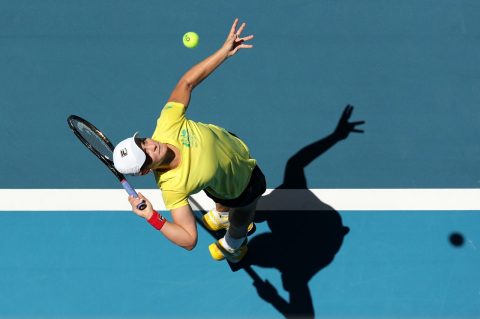
Image credit: Getty/Paul Kane.
Tennis champion
Tennis great Evonne Goolagong Cawley: “I never enjoyed watching tennis until Roger Federer and I wished there was a woman out there who had the same skills. Then along came Ash. It’s such a pleasure to watch her play – some of the shots she makes, I think, ‘Ooh, that must have felt good’. Ash is the second Indigenous player to represent our country and I’m so proud of her. She’s such a great role model and has done amazingly well, not just for Indigenous people but for everyone around Australia.”
* * *
12/100: Neil Shankly
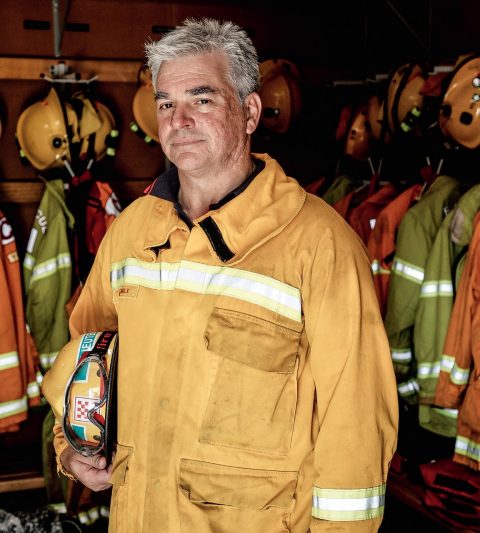
Image credit: Julian Kingma.
CFA strike team leader, Victoria
When Neil Shankly arrived in Mallacoota, a Victorian coastal holiday town near the NSW border and the site of one of the most harrowing episodes of the bushfire crisis, he understood why people were shaken. “I could see how far the fire had travelled, right to the shore,” the 55-year-old says of the flames that overtook the town on 31 December, forcing thousands of people to the water. “I like to help others,” he says. “But it’s not about me. There are many who do more than me. When you’re a volunteer, you see the effort people put in. It’s quite amazing.”
* * *
13/100: Ilora Godwin
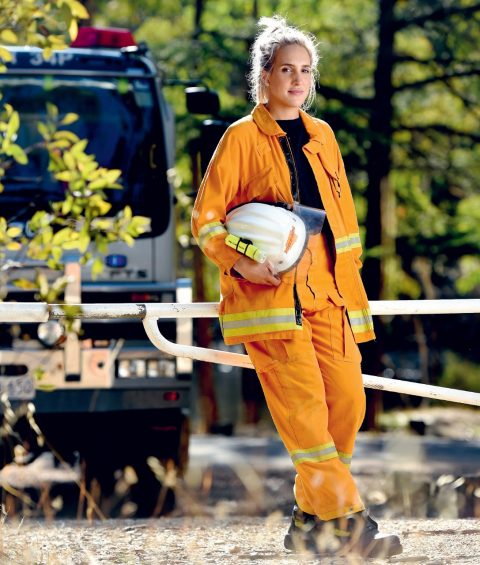
Image credit: Naomi Jellicoe.
CFS volunteer firefighter, South Australia
Godwin, a fly-in, fly-out refinery technician at BHP’s Olympic Dam mine, has been a volunteer firefighter for nearly five years. “The fires were difficult but the spirit of the communities is incredible. I got lots of hugs.”
* * *
14/100: Nathan Barnden
RFS divisional commander, NSW
Barnden lost his uncle and cousin in the fires but his grief spurs him on. “I don’t want any other family to deal with what we’re going through,” he says. “That’s what drives me to get up and put the uniform on. I don’t want anyone else to feel that pain.”
* * *
15/100: Curtis McGrath
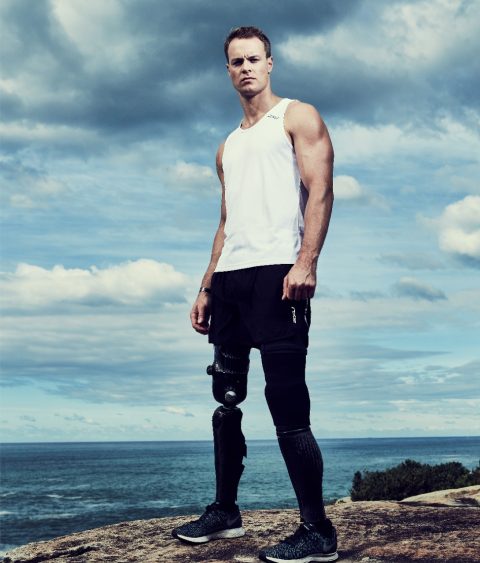
Image credit: Damian Bennett.
Paralympian
It started as an ordinary day for former Australian Army combat engineer Curtis McGrath during a tour of Afghanistan in August 2012. It didn’t end that way. As the then 24-year-old was sweeping an area for improvised explosive devices, a blast tore though him. Fully conscious, McGrath guided his colleagues through the first steps of emergency care – morphine, IV fluids and attempts to halt blood loss. “I knew the extent of my injuries and that my legs weren’t coming back.” Despite his trauma, McGrath offered his team solace. “I said, ‘You’ll see me at the Paralympics,’” he recalls. “I felt that whatever I said was in some way going to help their traumatic situation.”
* * *
16/100: Trent Dalton

Journalist and author of Boy Swallows Universe
What’s something you wish the world better understood about Australians? "We come across as knockabout but we also have a deep intelligence. We have incredibly bright people who punch above their weight in things like science and literature. Growing up, my family was rough as guts but all we ever wanted to do was play Trivial Pursuit and become the smartest people we could."
* * *
17/100 & 18/100: Robert de Castella & Zibeon Fielding

Image credit: Rohan Thomson.
Champion marathon runner and founder and director of the Indigenous Marathon Foundation; Runner, cyclist, fundraiser, health worker
Robert de Castella: "[Zibeon]’s a natural athlete. When he runs, he glides. But more than that he has this strength of purpose and drive. He works as a qualified nurse practitioner and is about to start studying medicine. He ran a 62-kilometre ultramarathon through the Australian desert to raise $50,000 for a dialysis clinic in his community. He then cycled 700 kilometres to build a gym for Mimili. And he does it all with incredible passion and infectious enthusiasm.”
Zibeon Fielding: "Robert de Castella is an all-round legend and when he speaks I tear up. He speaks really deeply and I relate to the things he talks about because they’re issues from where I’m from. I look up to the bloke like he’s my dad.”
* * *
19/100: HY William Chan
Urbanist and entrepreneur
Where others see a building, HY William Chan sees a facility for empowerment. By using his expertise to help people in vulnerable communities, the urbanist is working to create social change. “The best way to empower people is to share skills so they can build capacity to create solutions for their problems,” he explains.
* * *
20/100 & 21/100: James and Hayley Baillie
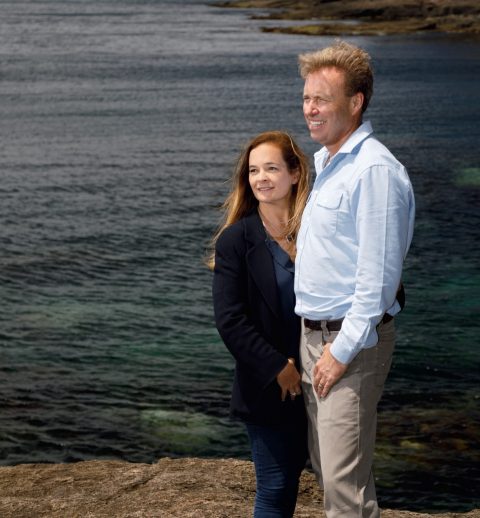
Image credit: Peter Mathew.
Owners of Baillie Lodges, which includes Longitude 131° at Uluru, Silky Oaks Lodge in Tropical North Queensland, Capella Lodge on Lord Howe Island and the soon-to-be-rebuilt Southern Ocean Lodge on Kangaroo Island
In January, Southern Ocean Lodge was destroyed by the bushfires that ravaged Kangaroo Island. “We both had lots of tears,” says James. But the couple has committed to rebuilding the property and making it even more spectacular than before. “It’s so important that it comes back,” says Hayley. “For Kangaroo Island and for Australian tourism.”
SEE ALSO: The Qantas Ad that Changed Paul and Ell's Lives
* * *
22/100: Kylie Kwong
Chef
"With my restaurant Billy Kwong, I always said I wanted to go deeper, not broader. I was able to create an authentic and meaningful version of Australian-Cantonesestyle food, while learning about the rich cultural heritage of our First Nations people – it was an absolute privilege.”
* * *
23/100: Rebecca Johnson
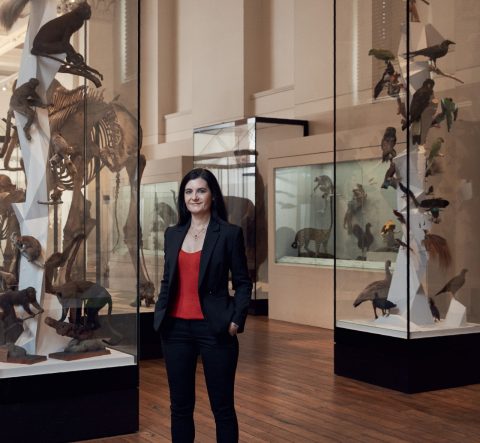
Image credit: Damian Bennett.
Chief scientist and associate director of science at the Smithsonian National Museum of Natural History
In late 2019, Johnson was named the new chief scientist and associate director of science at what is widely considered to be the museum of all museums, the Smithsonian National Museum of Natural History in Washington D.C. “To many people, museums are the places you go to see an amazing dinosaur skeleton,” says Johnson. “I want that skeleton to help you think about the environment it lived in and how climate changed naturally over time then put that into context with the pace of climate change now.”
SEE ALSO: Watch Qantas’s New Inflight Safety Video
* * *
24/100: Adam Flaskas
Director of Howard Smith Wharves, Brisbane
Howard Smith Wharves went from being derelict to a destination thousands of people visited every day. How does that feel?
It’s fun but there’s also a sense of responsibility and pride that the city believed in me to deliver this precinct. And then gratitude for the people I work with. Now, Brisbane people feel Howard Smith Wharves is theirs and that’s really satisfying.
Did your work as a property investor give you early insight into how Brisbane was changing?
Absolutely. I’ve lived in New Farm for two decades, 50 metres from Howard Smith Wharves, and my skill set is helping activate underutilised sites. I felt like I knew what the city wanted.
Hospitality has suffered such a blow from COVID-19. Does this reinforce the importance of community spaces like Howard Smith Wharves?
Enjoying a meal with family and friends makes people happy. None of us could have predicted this situation and right now I just want our customers and staff to be safe. But we will reopen – with a bang – and people will enjoy getting back out there after being cooped up at home.
* * *
25/100: Nick Cave
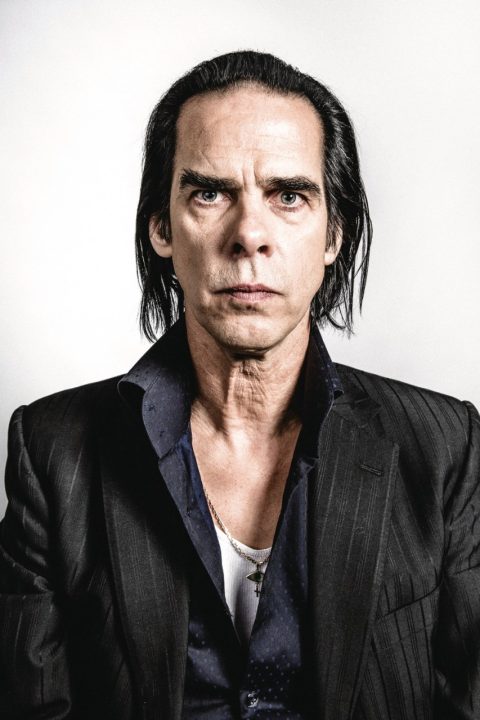
Singer, songwriter, screenwriter and author of The Red Hand Files
“Nick has inspired me both as an artist and a person so it’s difficult for me to frame him in an objective cultural context. There is certainly no other artist who has had a bigger influence on me; I put him up there with the all-time musical greats.
But the most profound influence Nick has had on me has come as I’ve watched how he handles the tragic death of his son. We’ll all suffer loss and much of our lives will be defined by how we negotiate these losses. To watch someone embrace his situation and the people around him and drag us all to a place that’s richer, more meaningful and filled with more beauty than the world we knew before is truly inspiring.”
ANDREW DOMINIK, DIRECTOR OF ONE MORE TIME WITH FEELING
Image credit: Michael Friberg
* * *
26-27-28/100: Jeremy Bear, Ryan Tate and Taylor
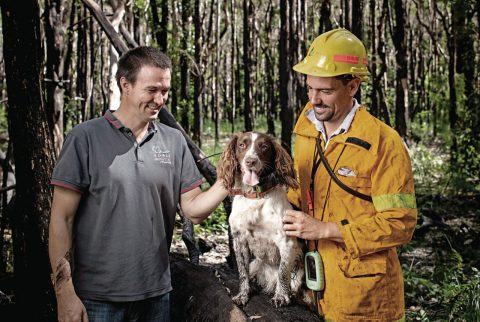
Koala rescue team
Thanks to his surname, Jeremy Bear from the NSW Central Coast (left) has always felt a connection with Australia’s eucalyptus-munching marsupials. (“Not that koalas are bears!” he hastens to remind people.) But it wasn’t until he took a redundancy from his engineering job in 2019 and began volunteering full-time with the Port Macquarie Koala Hospital that he turned his passion for the unique animals into his life’s work.
During the recent devastating summer bushfires, Bear banded together with Ryan Tate of Tate Animal Training Enterprises and his specially trained English springer spaniel, Taylor, to scour burnt-out bushland around Port Macquarie and the Snowy Mountains in the state’s south for koalas that needed their help. Taylor was a critical member of the team, hunting down the scent of koala scat so the humans knew where to look.
“I remember the first koala who came in to the hospital – we called him Paul,” says Jeremy. “He had pretty severe burns around his bum and his hands and feet but luckily he’s still with us, unlike some of the others we lost along the way.” It’s always hard, he says, when a koala slips away or has to be put down but the joy of releasing the rehabilitated ones back into the wild makes it worth it. “They find a tree they like and bolt right up it. Sometimes they even give you a little look over their shoulder before they go.”
Image credit: Lindsay Moller
* * *
29/100: Cyan Ta’eed
Founder of tech marketplace Envato and social enterprise chocolate company Hey Tiger.
Envato is now worth hundreds of millions of dollars; do you still have to explain to people what it is?
All the time. To sum it up in one line, it’s a series of marketplaces where people buy and sell digital goods but only people who work in tech and the type of people who read the Australian Financial Review would know that. No one else does and why would they? If you’re not a designer, developer or tech-savvy small business owner you’d really have no reason to have come across it.
What’s it like being a female leader in the male-dominated digital space?
For a number of years there was only one female developer I ever came across. We tried to hire her but she declined because everyone wanted to hire a female developer. It’s a blokey environment and for a long time I was trying to find that balance of how to lead while also backing myself. To learn to trust myself when I was getting pushback took some time and energy; it was consistently challenging for a few years. One of the lessons we learnt was how to create a culture that will facilitate inclusion but it took a bit of work to get there. I’ve mostly gotten over imposter syndrome but it’s taken 14 years.
What do you want to achieve with Hey Tiger?
I knew I wanted my next venture to be a social enterprise, something to really lean into and create a positive impact. I don’t take a salary from it; Hey Tiger is owned by a charitable trust and we make a donation for each bar sold to development projects in cocoa farming communities in West Africa. I find it fulfilling that my team and I are putting our hearts and souls into something that we believe in.
* * *
30/100: Susan Kurrle
Geriatrician and Curran Chair in Health Care of Older People in the Faculty of Medicine at the University of Sydney
In 1979, when Susan Kurrle was a locum GP, a mentor urged her to consider a career in geriatric care. Decades later, the geriatrician says she’s “never regretted a minute of it”.
Last year, Kurrle became a senior geriatric consultant on Old People’s Home For 4 Year Olds, an ABC documentary series based on research into intergenerational care that she’d overseen. The merging of aged- and child-care facilities saw chair-bound seniors up making slime and singing rhymes. Elderly wisdom and infant naivety combined on topics as complex as war and death, narrowing the gap between age groups and sending wellbeing soaring. “The children had no ageism,” says Kurrle. “They were non-judgmental. It was lovely.”
More than simply making for must-watch TV, the regular interaction between old and young showed positive outcomes for both groups. “If you looked at it purely as a medical intervention, it was very effective,” says Kurrle. “And relatively cheap – with no side effects!”
She believes the multi-generational family living model that was once the norm should help shape the future of aged care. “In our family and with friends it’s the relationships between us that are important. I think we need to keep that going in residential-care facilities; we have to make it much more home-like,” she says. “I would love to see the acceptance that older people need to be part of the community.”
* * *
31/100: John Olsen
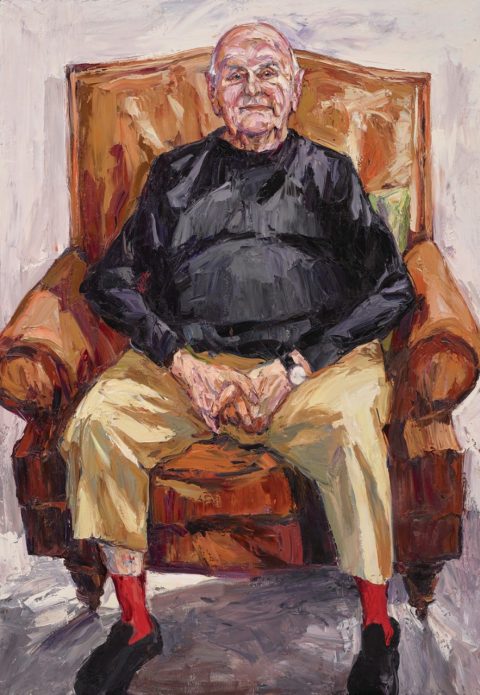
Painter, ceramicist and printmaker
“I first saw John’s work in 1965, shortly after my family settled in Australia from the United Kingdom and my parents gave me a book about Australian artists. I was 10 years old and soaked up the powerful images full of vigour and invention. John sat for me for a portrait in 2017 and I thought I had three hours to complete the study for the painting. An hour-and-a-half in, he gleefully declared, ‘Rosé time!’
As a fellow artist, John understands the challenges of portrait painting. Looking me straight in the eye he told me to be brutal, freeing me from the tyranny of vanity that can impose itself on the process. Back in my studio this fed into the portrait, which was a finalist in the 2017 Archibald Prize competition and is now in the collection of the National Portrait Gallery in Canberra. John is 92 and continues to have a vibrant enthusiasm for art, love, landscape, literature, food and sex, all transfigured in the luscious stuff of paint.”
ARCHIBALD PRIZE-WINNING ARTIST NICHOLAS HARDING
Image credit: Archibald Prize 2017 finalist Nicholas Harding, ‘John Olsen AO, OBE’, oil on linen, 198cm x 138cm © the artist, Photograph by Jenni Carter, AGNSW
* * *
32/100: Molly Steer
Founder of Straw No More
“I started Straw No More after I saw a movie with my mum about plastic in the ocean. I’ve been so inspired by the other kids who’ve joined the campaign; they’ve gone to schools, shops and cafés and asked them to stop using plastic straws and many have. It’s great to see I’m not alone in caring for the environment and it’s amazing how open people are. Doing something small can start a conversation and create change.”
* * *
33-34/100: Sophie Pollitt and Alexia Spalding
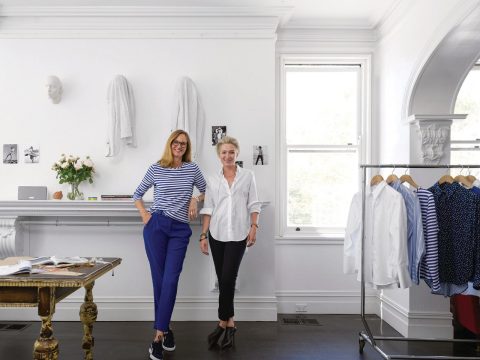
Co-founders of sustainable fashion business Good Day Girl
“We were at an outlet centre doing a sample sale together. Everywhere we looked we saw piles of unwanted stock being sold at a discount,” says Sophie Pollitt of the moment she and Alexia Spalding (left, with Pollitt) realised the fashion industry they’d been part of for years wasn’t working for them anymore. “We both thought, ‘No, we have to shift.’”
Once the pair put their heads together, the answer came: they would create a new kind of fashion business, one that started with the customer rather than the clothing.
Seven successful years later, Good Day Girl shows two collections a year in a Sydney studio and online, and Sophie and Alexia conduct one-on-one styling sessions to help each customer choose exactly what she wants to wear. Garments are then made to order – no waste and no more sample sales.
The concept works and not only for the customers, who rarely return their buys. The company has achieved B-Corp certification, which means it meets the highest standards of sustainability.
For Sophie and Alexia, the gamble has paid off. “Getting to spend time with our clients gives us so much joy,” says Alexia. “Seeing their enthusiasm and knowing that they are interested in a different, low-waste way of shopping is incredibly satisfying.”
Image credit: Justin Alexander
* * *
35/100: Mark Wenitong
Indigenous health professional
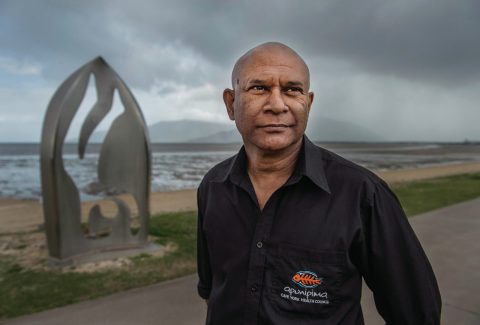
Mark Wenitong only had to look at his mum, Lealon, to decide what he wanted to do with his life. Having survived domestic violence while Wenitong and his four siblings were growing up in the 1950s and ’60s, Lealon (known as Aunty Lorna) went on to work in the first Indigenous health service in Queensland.
“She was a bit of a trailblazer,” says Wenitong, who saw what his mother was doing and began to ask questions. “Why is our mob doing so badly? What can I do to help?” He went on to become one of the first Indigenous men to earn a medical degree from The University of Newcastle and today he works as an Aboriginal health GP and public health medical officer in Far North Queensland.
He turns to reggae music to help him through the more challenging parts of his work. “Indigenous health can be really intense; it can eat you up. Music gives you that balance.”
As the COVID-19 pandemic proves virulent around the world, housing conditions in remote communities and pre-existing illnesses make Indigenous Australians especially vulnerable. “It’s our biggest critical issue at the moment,” says Wenitong, though he believes that management of the virus is achievable “if we remain strict with our criteria around testing, isolation and quarantine”.
Despite the problems, Wenitong is optimistic. “We’re becoming more sophisticated about what causes excess mortality in our population. As long as we keep up with new developments, I think we’re in a good place.”
Aunty Lorna would be proud.
Image credit: Brian Cassey
* * *
36/100: Sam Kerr

Football Player
When did you start playing football and were you good right away?
I was 12 years old and I don’t think I was very good at all. I grew up playing Aussie Rules so a round ball was a bit off for me.
You’re now captain of the Matildas and one of the best players in the world. How do you handle the pressure?
It’s natural and I feel the most pressure from myself. When something doesn’t go right, I tend to stew on it but I try not to let my highs be too high or my lows too low. I surround myself with people I love as a reminder that it’s just a game.
What would pay equity mean for women’s sport?
Female athletes deserve the opportunity to put everything they have into being the best they can be. When I was young I always imagined being a professional athlete and in the early stages of my career I quickly realised how tough it would be. I couldn’t have imagined where women’s sport is now – but there’s still more to go.
You’ve competed at the Olympic Games and FIFA Women’s World Cup and are now signed to Chelsea in the FA Women’s Super League. What drives you?
My love for the game and my will to win. So much sacrifice goes into being a top-level athlete that once I lose the love, I’ll hang my boots up.
Image credit: Frances Andrijich
* * *
37/100: Dr John Gerrard
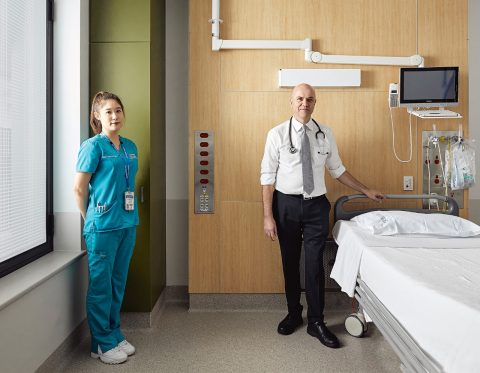
Infectious diseases physician at Gold Coast University Hospital
You worked in Sierra Leone in 2014 during the Ebola outbreak. Did you ever expect a pandemic to affect Australia?
Since I started training in infectious diseases in 1988, we’ve spoken about a pandemic of this nature in theoretical terms and this hospital was built with the concept of one in mind. So it’s something we’d been thinking about for a long time. In some ways, coronavirus is justification for the thought and planning.
What has being on the frontline of the pandemic shown you about our healthcare system?
I’m incredibly proud of the way in which individuals have stepped up with enthusiasm to manage these patients. I wasn’t sure if clinical staff would shy away but people from different departments want to volunteer.
What have you found most challenging about the crisis?
It may change soon but as of today we don’t have an effective treatment or vaccine and it’s difficult to talk to a patient who’s had a high fever and breathlessness for eight to 10 days when there’s no specific treatment for them. That’s been the hardest thing.
Are you optimistic about the development of a vaccine?
In this situation, what I find gets me through is to focus on what I know and what I do, which is treating patients. Obviously we wish for a vaccine but who knows.
I’m sure you can’t talk about treating Tom Hanks but how does having a high-profile patient affect your job?
We treat all patients exactly the same. Whoever they are, they’re treated the same.
38/100: Catherine Li
Renal nurse at Gold Coast University Hospital
You usually work on the renal ward. Did you volunteer for the infectious diseases team?
Dr Gerrard was looking for someone who spoke Mandarin and I was on that night – it was good timing. When they asked me I said, “Yeah, I can speak Mandarin” and then I thought, ‘Wait, what’s this for?’ Because I’d heard we had a confirmed case. It was confirmed at 8pm, I went to work at 9pm and got called at about 10.30pm.
Were you nervous?
I was but when I got to the infectious diseases ward, Dr Gerrard was there and a person from infection control told us what to do, like how to put on and take off PPE [personal protective equipment] in the correct order. There was a team of people, everything was calm and I felt really supported.
What was the biggest challenge?
Treating patients in separate rooms. You can’t wear the same PPE with multiple patients so I had to change every time I went into a different room. There were eight patients, including three children, and they had so many questions. I was there to keep them calm and tell them it was okay.
Image Credit: David Chatfield
* * *
39/100: Stan Grant
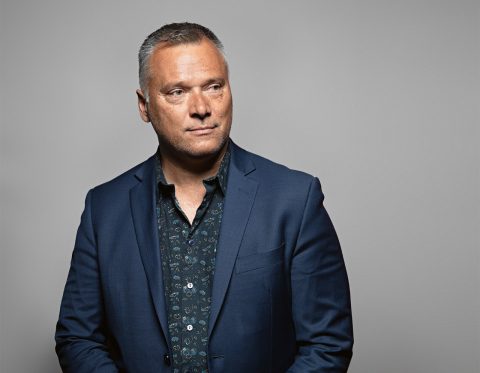
Journalist, author and writer of The Australian Dream
“I can’t remember a time when I didn’t want to be a journalist. My earliest memories are of watching momentous events play out on the television news: the Vietnam War when I was a young boy; man landing on the moon. There were no Indigenous journalists for me to look up to then but what I did have was a deep connection to stories. My family are storytellers, readers and writers, that’s what we do.
"Telling Adam Goodes’ story in The Australian Dream [which focuses on the racial abuse he suffered as an Indigenous AFL player] was like telling my own; the racism that threatened to break him apart is something I’m very familiar with. Adam has a profound sense of who he is and a profound sense of right and wrong and he took the many fights and struggles of Indigenous people and gave them a voice. The film tells us something deeper about Australia, about how far we have come as a nation but where we still fall short. It’s about what we can aspire to, speaking out against injustice and demanding we do better and be better.”
Image Credit: Jay L. Clendenin
* * *
40/100: Adam Goodes
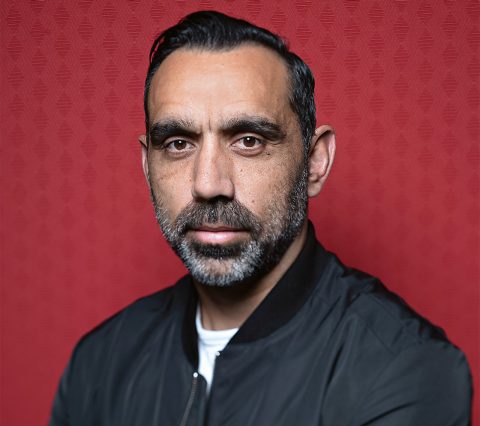
Retired AFL player and co-founder of Indigenous education charity GO Foundation
“When Stan Grant came to me, it had been a couple of years since I’d retired and a bit of water had gone under the bridge. His idea was to make a documentary that would tell the story of why I felt the need to stand up like I did but also to tell the history of Australia. That was a positive reason for me to dig it up – to help educate others.
"I remember when I was about 18 or 19 a reporter asked me how it felt to be an Indigenous role model and I actually didn’t even know what it meant to be an Indigenous person. It was really tough; I had to go on my own personal journey to find out who I was. Now, for me, being a role model is about acknowledging the good things but also admitting your mistakes and learning from them. The Australian Dream is out there for people to learn from. It’s not up to me to keep the conversation going anymore. Hopefully, it helps build empathy and a bit more understanding.”
Image Credit: Jay L. Clendenin
* * *
41/100: Bruna Papandrea
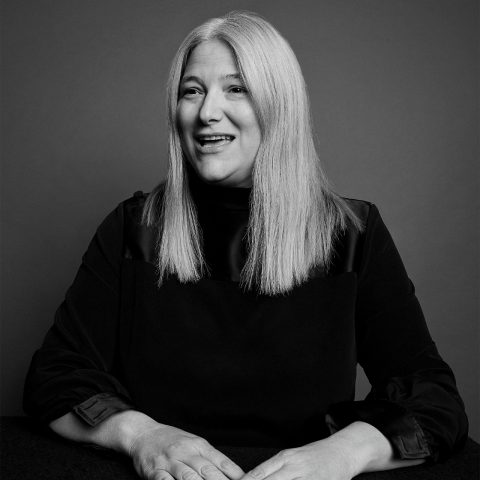
Film and television producer
A number of the stories you’ve produced come from Australia – Big Little Lies, The Dry and Penguin Bloom. What makes our stories interesting?
Australians are natural storytellers, it’s part of our culture and we have so many great stories. Plus, Australia is my home. I grew up in Adelaide; it’s where my family is from so it’s important to me.
Women’s stories are also a focus for you.
I’m always interested in putting women in the centre of the narrative, instead of the “girlfriend” or “wife”, and telling stories that haven’t been told before. That’s what you’re seeing in Big Little Lies and Wild and Gone Girl, characters that are complex, original and even a little dark because that’s what women are. They inspire me; there are so many incredible women.
How do you make your voice heard in such a noisy industry?
It’s all about relationships, whether that’s with literary agents, authors like Liane Moriarty, other producers, such as Reese Witherspoon, or directors and actors, like Nicole Kidman. It’s about us feeling the same way about a project and coming together to make it work.
What drives you?
I have the best job in the world – that’s motivating. I’ve always wanted to tell stories; growing up I wanted to be Jana Wendt. Now that I have six-year-old twins, Roman and Avalon, if I have to be away from them it had better be a good project.
Image Credit: Jesse Lizotte
* * *
42/100: Ben Quilty

Artist
On creativity
"I’ve always just made work for myself. It comes from a very protected, personal and honest place. There have been times when I’ve thought about finding a pretty spot and making paintings of a beautiful garden for the rest of my life – I tried when I got back from Afghanistan in 2011 – but it never lasted long. There’s so much to make work about."
On crisis
"I once read that the greatest art – Picasso’s Guernica, for example – is made in times of upheaval. It feels like the world is really fertile for artists right now; every artist on earth can create in response to COVID-19."
On activism
"Dad was into politics and I remember my mum marching against the invasion of Iraq and forcing my two brothers and me to do it with her. Our parents taught us to have a keen sense of injustice and that if you’ve got a voice you should use it to speak out."
On legacy
"I grew up in suburban Australia in the late 1980s and early ’90s and art wasn’t really accepted as a career path. Curator Lisa Slade put the Quilty exhibition together [last year] and it was both exciting and confronting for me – a retrospective is generally for dead people. Having a show at the Art Gallery of South Australia or NSW is something that I never dreamt of."
On optimism
"There’s so much that makes me optimistic: the beauty of being alive and having a conscience; being able to communicate with other people; looking at a blue sky. Humans have a lot to answer for but we’re also pretty resilient – able to laugh, to love, to create. Those are unique, extraordinary talents and to be human is a never-ending wonder."
Image Credit: Olivia Quilty
* * *
43/100: Tan Le
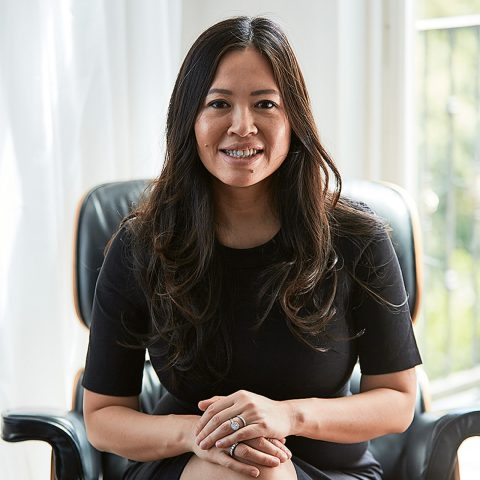
Founder and CEO of Emotiv Artist
In 1982, after a dangerous journey by boat from Vietnam then three months in a refugee camp, Tan Le stepped onto Australian soil.
“I remember my mum walking my sister and me down the steps from the plane. At the bottom she said, ‘You’re on special ground. Bend down and touch the ground.’” To four-year-old Le, the tarmac didn’t feel special. “Make it special in your mind,” her mother said.
“That line was very symbolic of my journey to Australia,” says Le from her home in San Francisco. “It was a chance to start over. We made Australia special in our mind because we never took anything for granted.”
As her mother worked several jobs at a time, Le studied hard to graduate from high school, going on to study law when she was only 16. While still at university she was awarded the 1998 Young Australian of the Year Award for her advocacy work with the Vietnamese community in Footscray, Melbourne.
And today, the little girl who touched the ground all those years ago spends her days making things special in other people’s minds. Le is the founder and CEO of Emotiv, a groundbreaking company that designs headsets that measure wearers’ brain activity and uses that information to “control” tech in the external world. Her work has allowed a man who lost the use of his limbs to drive a Formula One car and a paralysis victim to communicate again. “There’s so much more to explore,” says Le. “It’s exciting and humbling at the same time.”
Image Credit: Andrew Miller
* * *
44/100: Campbell Remess
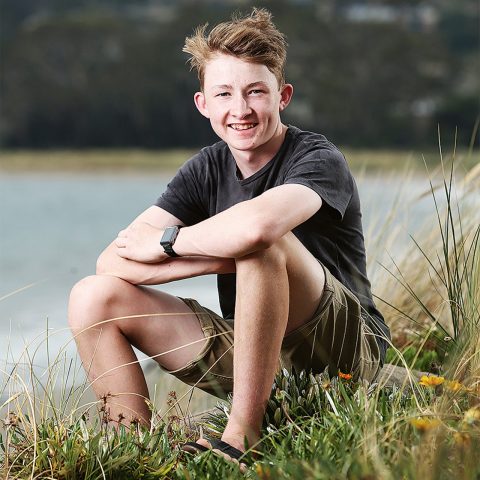
Founder of Project 365
On Christmas Eve in 2013, a nine-year-old boy from Hobart had an idea. “I asked Mum if we could buy gifts for sick kids in hospital,” remembers Campbell Remess, now 16. “But she’d just finished shopping for us – I’m one of nine kids – so it wasn’t possible. I decided to try to make them presents myself. I sat down at her sewing machine, googled some teddy-bear patterns and got started.”
Campbell has now made more than 3100 bears and donated them to people across the globe, many to sick or disabled children and some to those he feels need a pick-me- up – he sent one to former NSW Rural Fire Service Commissioner Shane Fitzsimmons after the recent devastating bushfires.
Certain recipients are close to his heart. “I heard about a little kid named Duke who lives on the north coast of Tassie,” says Campbell. “Duke had run out in front of a motorbike and suffered horrible head injuries. I made him a bear and wanted to give it to him personally. When I visited, his dad was holding him up as Duke couldn’t stand by himself. I leant over to give him the bear, he smiled and held up his hand for a fist bump, which he wasn’t expected to be able to do.”
In 2020, a leap year, Campbell has encouraged followers of his organisation, Project 365, to make a bear a day, with the goal of giving 366 toys to children in hospital this Christmas. “Being kind will change the world – and kindness starts small,” he says. “I make bears but for someone else it could be taking the neighbour’s rubbish out. It all matters more than we know.”
Image Credit: Zak Simmonds
* * *
45/100: Ian Frazer
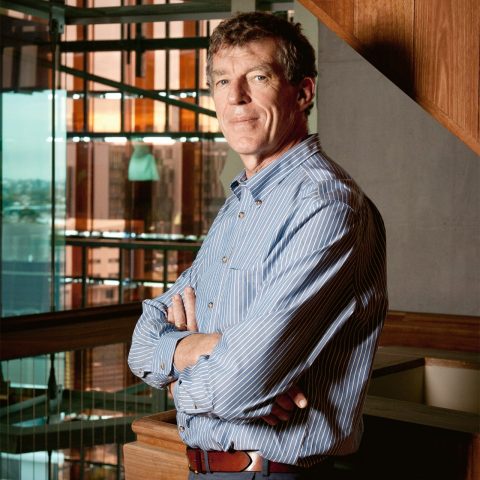
Immunologist, professor at the University of Queensland and co-developer of the vaccine against human papillomavirus (HPV) with the late Dr Jian Zhou
“We started off in the early 1980s, trying to grow the virus in the lab but it wouldn’t grow so we had to build it from scratch. When we put the building blocks of the coating of the virus into a test tube and shook them up, they formed the coating of the virus on their own. That’s when we realised we could make something that looked like the virus but wasn’t infectious – the basis of the vaccine.
"It was another 10 years before the vaccine company got to the point of doing clinical trials and that’s when things started to get interesting. I was in New York when I got the call to tell me that the vaccine worked. The people at the company were really, really excited. They wanted me to talk to the TV channels so I went to Times Square and onto late-night chat shows. That’s when I knew it was actually real.
"My proudest moment was giving the first ever shot of the vaccine to my colleague’s 16-year-old daughter in 2006. I was pretty emotional but also very excited. It felt like the completion of the circle.
"The message that I hope gets out to research students – who can sometimes get despondent when things aren’t going well – is that my work relied on a lot of other people’s research along the way. Everyone in research is putting something useful into the picture and your work can benefit patients as much as a doctor can.”
Image Credit: Robert Shakespeare
* * *
46/100: Jennifer Irving
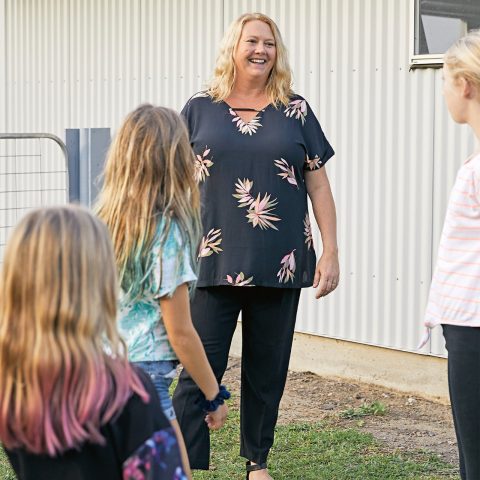
Teacher at Nambour Special School and creator of the Emergent Literacy Assessment Tool
Completing work experience at a special school usually isn’t high on the list for many Year 11 students – and Queensland’s Jennifer Irving was no exception. “I was the last one in class to write down what they wanted to do,” she recalls. “I wanted to do photography and all those spots were taken.” But chance led Irving to her calling. “I walked in and thought, ‘This is something else.’”
Starting her career as a sign- language interpreter and a teacher of the deaf, Irving began working with students with severe and multiple disabilities at Nambour Special School in 2006. Frustrated by a lack of quantitative teaching tools, she devised the Emergent Literacy Assessment Tool (ELAT).
“These are students who historically may not have had access to rigorous literacy learning programs,” explains Irving. “ELAT lets us track and assess them and make sure they’re engaging in learning experiences tailored to their needs.”
Learning to read and write or answering a question in class are basic milestones for most kids but finding a way to communicate is key to an enriched education and sense of agency for Irving’s pupils. “We have students who had no means to even indicate ‘no’ who now use alternative communication to express their opinions, thoughts, feelings and ideas,” she says.
“It’s a basic human right to be understood and understand others and we’re trying to make sure our students can do that as independently as possible.”
Image Credit: David Chatfield
* * *
47/100: Jefa Greenaway
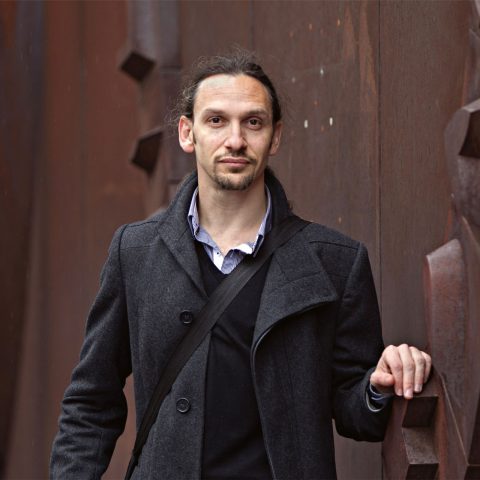
Architect and co-founder of Indigenous Architects Victoria
It was only on reflection that architect Jefa Greenaway realised he was unique. “Going through my tertiary studies I knew there weren’t any Indigenous people in the faculty at that time,” he says. “It wasn’t until I’d been in private practice for a number of years that I realised there were hardly any of us.” In 2004, he became the first Indigenous architect registered in Victoria.
Working alongside wife Cathy Drosinos at their firm, Greenaway Architects, he applies the history and stories of his cultural heritage to contribute a singular sensibility in the field. “When we move beyond the tropes and clichés to blend different perspectives, that’s where innovation happens,” explains Greenaway, adding that “it’s often through conversations with traditional custodians and then interpreting, innovating and adapting some of that thinking through a contemporary lens.”
It’s an approach that resonates with Greenaway’s clients. “There’s been a huge appetite and desire to engage with these stories as they relate particularly to the built environment,” he says.
As well as his successful practice, Greenaway established Indigenous Architects Victoria (IAV) to encourage more Indigenous Australians to pursue the profession. “It can be isolating at times because you don’t have a cohort to draw from,” he says of his desire to give back. “IAV is the only peak body that represents Indigenous built-environment practitioners.”
Image Credit: Peter Casamento
* * *
48/100: Mat Lindsay
Ester, Poly, Shwarmama
49/100: Mike McEnearney
Kitchen by Mike
50/100: Neil Perry
Rockpool Bar & Grill, Spice Temple, Rosetta
After more than 30 successful years in the notoriously tough restaurant business, Neil Perry’s work ethic can’t be faulted. “I’m always focused on honing my skills and my relationships and making sure that we’re innovative,” he says.
Yet Perry’s legacy extends beyond the enduring popularity of his eateries and the 23 years he’s been Qantas’s creative director of food, beverage and service. It includes the roster of chefs who trained in his kitchens and now run their own renowned restaurants. “I was an apprentice for Neil and it was the first kitchen job I had,” says Mat Lindsay, whose Sydney diner, Ester, has two hats. “Everything I do is influenced by him in some way.”
Mike McEnearney, the name behind Kitchen by Mike outposts in the Sydney CBD and international airport and the creative director of inner-city Carriageworks Farmers Market, says one of his guiding principles came from Perry. “My care and love for really great produce started with Neil and is something I try and teach everybody.”
When COVID-19 forced restaurants across the country to close or restructure their businesses, Perry’s innovation – and compassion – showed. Rockpool Dining Group launched community food-delivery program Hope Delivery, which aims to serve 14,000 meals a week to those who need them most in Sydney and Melbourne.
More broadly, the industry rallied around workers not eligible for government assistance, friends whose restaurants were shuttered permanently and producers who no longer had kitchens to supply. “It’s shown me that we’re a kind industry, we’re resilient and at the cornerstone of who we are as people, we’re hospitable,” says McEnearney.
Whatever the new normal looks like when restrictions on eating out have lifted, the three chefs are eager to welcome diners back and support their mates. “I’m looking forward to going out for dinner at one of my friends’ places and having a glass of wine,” says Lindsay.
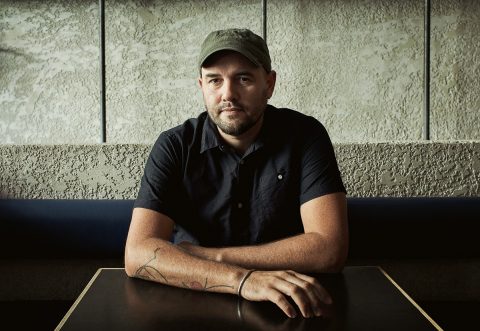
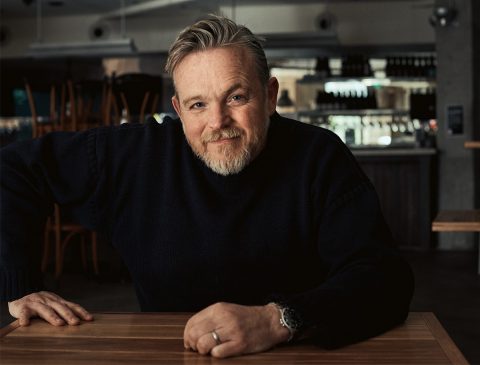
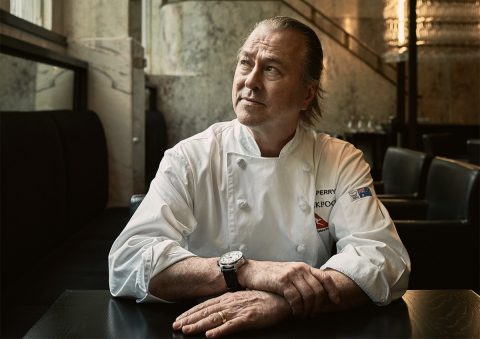
Image Credits: Hugh Stewart
* * *
51/100: Patty Mills
Professional basketball player with the San Antonio Spurs, three-time Olympian and founder of the Team Mills Foundation
Growing up in Canberra, did you ever think you’d play in the NBA in the United States? I used to re-enact the famous bank shots of my former teammate, Tim Duncan, but did I ever think I’d win a championship with the big fella? I still pinch myself every now and again.
How do you express your connection to Australia when you’re based in the US? My wife, Alyssa, and I practise culture on a daily basis, from dancing to speaking language to showing artwork in our home or cooking traditional recipes that Alyssa has learnt from uncles and aunties. It's a beautiful thing, the Indigenous culture, because I can take it anywhere in the world.
During the recent bushfires, you came out to spend time in affected communities. Why was that important to you? Our culture, the songs and the dances, is built off the land so finding a way to make an impact was the next step for us. We went on social media first because that's what we could control. Then, once we arrived, we tried to focus on looking after the land to prevent it happening again.
You’ve written children’s books and do outreach with youth groups. What do you enjoy about working with kids? It’s the next generation who’s going to carry on the cultures and traditions, understand work ethic and represent the green and gold the right way on the biggest of stages.
Why is community work such a focus for you? It comes from my parents. They dedicated their careers – working in the federal government for more than 50 years – to bettering Indigenous life. It became second nature to me; basketball just happens to be my platform for achieving the same goals as my parents.

Image Credit: Atiba Jefferson
* * *
52/100: Andie Halas
Founding director of Thread Together
It’s a simple idea: excess and end-of-season clothing is collected from fashion brands and distributed to people in need. So simple it’s a wonder it isn’t the norm. But it was Andie Halas’ industry contacts and desire to help restore dignity to those relying on donated clothing that turned this idea into a solution.
“People donate clothing in a well-meaning way but often you get one shoe or an old bra and I thought, ‘I know I can do better than this,’” she says. Halas, who has a background in marketing and whose family owned the Seafolly swimwear label, made a few calls and soon she had “a car full of clothes”. Thread Together was born.
Eight years later, with a network of fashion and charity partners, Halas and her small team have distributed more than 2.5 million items of as-new clothing that would otherwise have gone to landfill. “We’re up to about $10 million of stock we’ve diverted. It’s still on the earth being used for a purpose rather than just going into the ground.”
While the environmental impact makes her proud, Halas says connecting with people is most rewarding. “A woman once said to me, ‘It’s the first time I feel like I’m not in fancy dress’ because she had the ability to choose.”
And as Australians face the economic impact of the COVID-19 pandemic so soon after the devastating bushfire season, Thread Together’s services are more essential than ever. “We’ll be doing everything we can to support people in difficult times,” says Halas. “That’s what we do.”
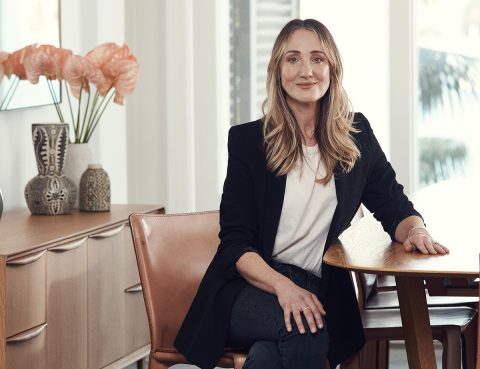
Image Credit: Damian Bennett
* * *
53/100: Hugh Evans
Founder and CEO of Global Citizen
“Hugh Evans is one of the most inspiring people I have ever met. I’ve known him for more than 10 years and he’s met every goal and challenge he’s set for himself. Global Citizen started in my living room – now it’s taken over the Great Lawn in Central Park. I wouldn’t be the least bit surprised if he’s running the world someday.” - Actor and philanthropist Hugh Jackman
* * *

54/100: Christine Morgan
CEO of the National Mental Health Commission and national suicide prevention adviser to the prime minister
What drew you to the work you do? Mental health is an integral part of each of us as human beings and we use just two words to describe so much. I realised how much work needed to be done to ensure we all understand and can manage our mental health in the best way possible. Your current role suggests there’s still a lot to be achieved.
What drives you? In the past 15 years we’ve had increased awareness but the level of stigma remains horrifyingly high. What drives me is to say that’s not okay. Mental health is a part of each and every one of us and we should remove the stigma and barriers to seeking help. I’m passionate about every Australian being supported to look after their mental wellbeing.
Where do you begin to approach such a widespread issue? I think we need to come together to work out what the key priorities are. Then it’s about engaging with all levels of government and all levels of the community. At a government level, to shift policy and investment decisions and at the community level, to break down those barriers to seeking help. COVID-19 is an unprecedented health crisis.
How essential is mental health awareness during this time? One of the most important things for us to realise is we are anxious and it’s okay – it’s not wrong to feel anxious. Our mental health and wellbeing, if we can harness it and look after it, is going to be foundational to getting us through uncertain times.
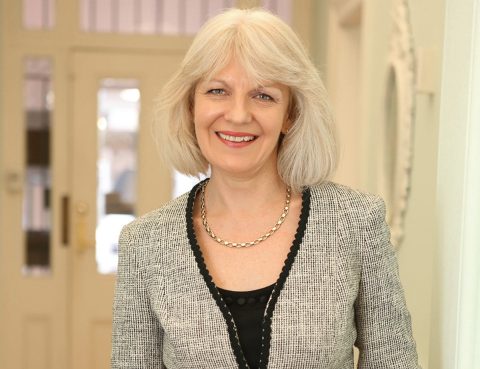
* * *
55/100: Leah Brady
Artist and co-director of the APY Art Centre Collective
56/100: Skye O’Meara
Manager of the APY Art Centre Collective
“The APY Arts Centre Collective was the vision of the elders across seven communities in the APY Lands,” says Skye O’Meara (below, right), manager of the Indigenous-owned and governed gallery in Adelaide.
“They wanted to start an organisation that gave them more agency in the Indigenous visual arts industry and created opportunities, particularly for future generations and the young emerging artists on the land.”
Operating with what O’Meara calls an “unashamed commercial focus”, the centre’s stringent ethical practices have manifold benefits, ensuring that collectors are buying authentic works and the artists creating them see the profits. “From the walls of our galleries we have an 80 per cent return on retail price back to communities, which is the best model operating in Australia today,” says O’Meara.
The centre also has the highest profit return of any business of its kind in Australia.
For Leah Brady, who helped establish the centre’s studio spaces and exhibits her own work at the gallery, art is a way to communicate and honour the stories of her culture.
“I paint Piltardi Tjukurpa. It is my grandson’s country and he gave me authority to paint this story,” she says. “My mother was born at the top of a hill near Piltardi [in the Northern Territory] so I carry authority of that story and I celebrate it in my paintings.”
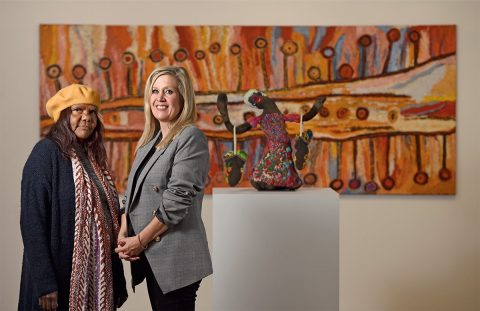
Brady paints at the centre, where she’s also a director, and relishes the chance to give back to her community in remote South Australia. “With the art centre, the money story is clear,” she says. “Since I’ve been working here in Adelaide my opportunities have been growing and that makes me feel very happy and safe.”
Image Credit: Naomi Jellicoe
* * *
57/100: Paul McDermott
Principal of Blue Haven Public School
“I never really seriously considered any job but teaching,” says Paul McDermott. “And I’m very, very grateful I chose it.”
No doubt the community at Blue Haven Public School on the NSW Central Coast feels the same. In 2016, when McDermott was made principal at the school, it ranked in the bottom 10 per cent of NAPLAN results. By 2018, Blue Haven had advanced to the top 10 per cent.
“We wanted to set the bar high so our kids had something to strive for,” says McDermott of creating a culture of high expectations. This included formulating a new school vision in collaboration with the local community – “we heard words like inclusive, positive, school culture, wellbeing and success” – and encouraging students to dress in uniform “to show that they’re part of a team and reflect the pride they have in their school.”
At the Australian Education Awards in 2019, Blue Haven was named government primary school of the year. “It’s certainly not all about me, that’s for sure,” says the principal. “It’s very much something we’ve worked on as a team.”
As proud as McDermott is of his students’ academic successes, he’s just as invested in making sure the school is a safe, supportive and enjoyable place to be. “Primary school is about memories, having fun and socialising,” he says. “We expect the kids to work hard and treat people with respect but, gee, we have a lot of fun as well.”
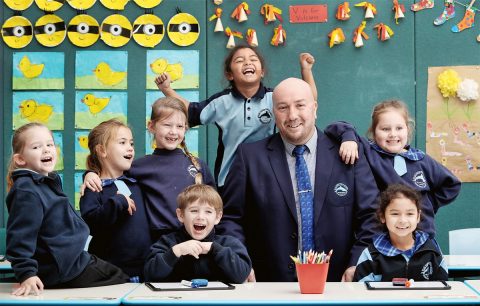
And after the disruption and uncertainty of COVID-19 closures, he considers the emotional wellbeing of his pupils to be the top priority. “The most important thing in this time is that our kids feel a sense of belonging, that they feel part of the school community and they know they’re going to be okay.”
Image Credit: Sue Graham
* * *
58/100: Muriel Halsted
Member of the Country Women’s Association, Scone, NSW
More than 5 million people have watched the video you made for the ABC earlier this year, demonstrating how to make the perfect scone. How does that feel? It’s a bit overwhelming. But I think it’s because of this COVID-19 isolation. People who’ve been working and never wanted to make scones now have a chance to do it – and the recipe is pretty foolproof.
When did you first join the CWA? It was in 1945. I lived in a little town called Garah [in northern NSW] and I became secretary of the CWA Younger Set. Around that time, I met Bill, my husband. When we got together, he had just been discharged from the Light Horse regiment because he had terrible feet. We were married for six weeks short of 60 years.
The CWA has been a big part of the lives of so many women in regional Australia. Very much so. It was important to us for companionship and friendship. It helped me with rearing seven kids because it started a baby health clinic and the Sister used to come once a month. Later, in Bullarah, we got a teacher and started a school in the hall. The CWA is to be thanked for that, too. I don’t know where the years have gone; I turned 92 in February.
Have you always been a good cook and baker? No, although at one stage I cooked at a Coonabarabran motel for two years because it was a drought and we weren’t going to have a wheat crop. I learnt to cook a few things there. When you’re feeding seven kids it doesn’t matter if it turns out well – they’ll still eat it!

Image Credit: Steve Gonsalves
* * *
59/100: Benjamin Young
Founder and CEO of Frank Green
Your background is in corporate mergers and acquisitions. What made you pivot to start Frank Green reusable cups and bottles? The genesis of Frank Green was seeing the devastating impact of single-use plastics throughout the world. So the business has always been about looking at the top 10 things that go to landfill and trying to make alternatives for them. If those products are beautifully designed and made we can probably get rid of 90 to 95 per cent of the plastic that goes to landfill.
Frank Green products were among the first of their kind and helped make sustainability sexy. Why do you think the brand remains so popular? You can’t blame people for not taking up a product if it isn’t solving a problem for them. Frank Green is all about solving consumer problems to make life easier. That’s the reason we’re conscious of the materials we use, the design, style, technical capabilities and functionality. You have to do it all really well.
How does it feel when you see people using your products? If I see someone using Frank Green I talk to them – they don’t get away from me! I introduce myself and try to understand more about what they’re thinking and feeling. It’s a proud moment. That we’re being impactful is a real privilege.
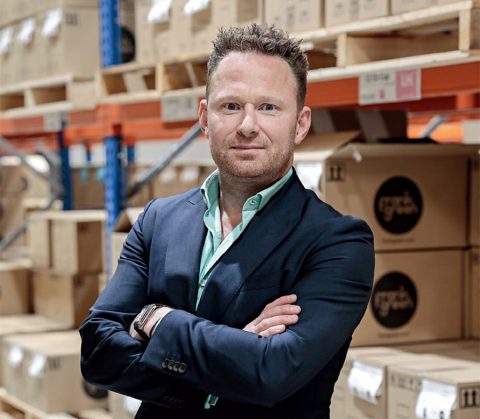
Image Credit: Julia Sansone
* * *
60/100: Hannah Gadsby
Comedian and writer of Nanette and Douglas
“Hannah is the spunkiest spunk on earth. Fact. When I saw Nanette in a tiny venue in New York, I was genuinely astonished. She harpooned the audience, me included. I took it to heart, as did my husband, and we chewed over it for ages. It was literally a game changer. I felt gratitude for it. For her. To witness Hannah’s unapologetic, authentic, raw, sharp and hilarious work is a treat. To have her updating and informing us about important stuff we may not have addressed properly is a privilege. To laugh so belly-hurtingly much is a total tonic. You know how it’s tempting to sort of ‘own’ people you admire? I do that with her. I take her personally. I kid myself that what she does is mainly for me... So when I saw her perform the brilliant Douglas in Brighton a year or so after Nanette, I was genuinely gutted to see that she belongs to many now. I’m still struggling with processing that rejection. Shine on, Hannah, you utter palindrome.” - Comedian and Actor Dawn French
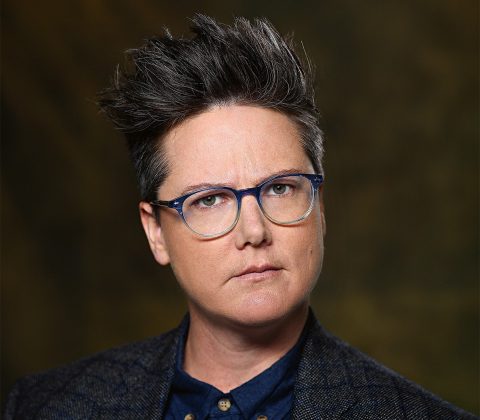
Image Credit: Wally Skalij
* * *
61/100: Nas Campanella
Journalist
The radio was always on in Nas Campanella’s house when she was growing up. “It was a way I learnt about the world around me,” she says. “From the moment I woke up until the moment I went to sleep.”
After volunteering in community radio as a teenager, she knew she wanted to be a journalist. “Being able to talk to the community, play music and create a show out of nothing was a wonderful experience.”
In 2010, she graduated from the University of Technology Sydney and set out to tackle dual challenges: finding work in a competitive industry and discrimination – Campanella has been blind since early childhood. “I usually got interviews and then faced ignorant people who didn’t understand that even though I have a disability, I’m still very capable, I still have a qualification.”
Four years of unpaid internships (“Anyone will give you work to do for free!”) led to an ABC cadetship, a regional placement in Bega, NSW, and her seven years as a newsreader at Triple J. “The ABC was one of the only organisations that saw me as a person and a journalist and that I had potential, regardless of my disability. It was willing to invest in me.”
Campanella left Triple J earlier this year to take up the role of national disability affairs reporter for ABC News and is excited about sharing stories that wouldn’t otherwise be heard. “I’ve gone from one dream job to another,” she says. “I can’t wait to bring voices that have been hidden for a long time to the forefront.”
Proud to be a role model, the 31-year-old wants no-one to ever be limited by their disability. “I hope people see what I do and feel they can do something similar,” she says. “I also hope they’re looking up to other journos and thinking, ‘I can be that no matter what background or ability I have.’”

Image Credit: Steven Chee
* * *
62-63/100: Kate and Matthew Jones
Nurse and pilot with the Royal Flying Doctor Service
Not everyone would relocate from Melbourne to Derby, a remote Western Australian town with about 4000 residents, for their partner’s work. “She agreed to six months,” says Matthew Jones, who moved to the Kimberley region with wife Kate to fulfill his boyhood dream of being a pilot in the Royal Flying Doctor Service (RFDS).
“Nearly seven years later, I’m not going anywhere,” says Kate, laughing.
Now based in Broome, the couple has fallen for regional Australia’s uniquely beautiful landscapes, the communities they’ve become a part of and working for the 92-year-old not-for-profit aerial medical service. “There’s a focus on the nurses, doctors and pilots but it’s also the engineers who keep the planes flying, the operational coordinators who take the phone calls and so many more,” says Matthew.
Kate accepted a job as an RFDS primary healthcare nurse in 2018, a role that takes her to remote communities and cattle stations a few times a week. “I get to go to places that lots of people will never have the opportunity to see and I feel very blessed that they welcome us so happily,” she says.
Juggling raising their two young boys with the logistics of often unplanned emergency travel is tricky but Matthew says Broome has given the family “friends who would drop everything to pick the kids up from school at an hour’s notice” – a hypothetical that recently became reality when the couple was stuck on a job overnight.
Though the family moved for Matthew’s dream – “It’s the job I always wanted to do and I’m incredibly lucky to be able to do it” – the adventure has proven every bit as rewarding for Kate. “I’m not sure I can imagine doing anything else now,” she says.
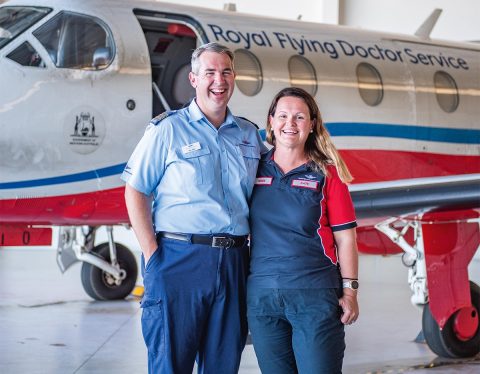
Image Credit: Abby Murray
* * *
64/100: Tayla Harris
AFLW player and boxer
Were you a sporty kid? Yes. Mum and Dad will tell you that I never sat still. At the shopping centre I had to be on Dad’s shoulders to stop me from running away. It’s no wonder I was signed up to so many different sports.
You’re now a champion in two sports. Do you feel pressure to be the best? In terms of sport, the only person I want to beat is myself or my last performance. The pressure to be a good role model is something I take extremely seriously, perhaps more seriously than playing the best football or having the best fights.
You were a victim of vicious online harassment in 2019. What would you say to someone being bullied? I can’t get a grip on what motivates people to be that way and I feel a responsibility to make it known that I’m not going to stand for it. My boxing coach once said, “Only people below you can drag you down,” and it just makes total sense – anyone trying to bully you or be nasty is below you.
How did your training change during lockdown? I’ve taken it as an opportunity to train in different ways and try different methods. If they don’t work, the only thing it will affect is my ability to know myself better.
How do you hope to be remembered? I’d like to be remembered for the way I maintain my morals and values. Of course, it would be great to be remembered for my physical performance, too, but I hope the current batch of athletes coming through exceed what I’ve achieved.
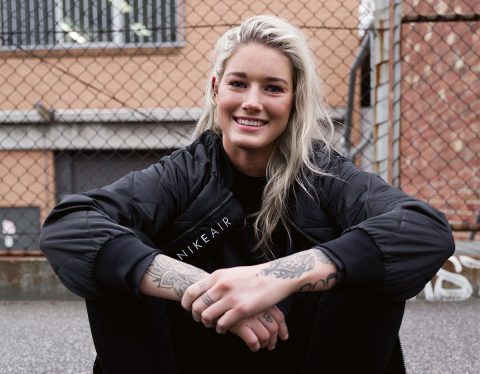
Image Credit: Alex Drewniak
* * *
65/100: Liz Ann Macgregor
Director of the Museum of Contemporary Art Australia
“When I was first appointed in 1999, most of my British friends thought I was mad to go to Australia but now there’s a strong interest; people are impressed with the diversity and strength of the work. Australian museum directors have a responsibility to make sure that our artists are purchased by major art museums around the world. Our mission has been to make the MCA accessible and friendly, even if some people might find the art a bit challenging. After COVID-19 there’s an opportunity for galleries to work closely together on what I’m calling an art-led recovery – for us to encourage audiences to travel to other states and see what’s happening.”
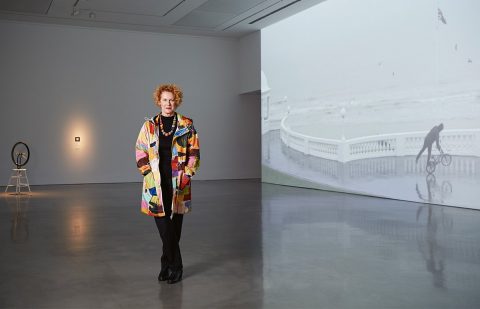
Image Credit: Nic Walker
* * *
66/100: Nick Mitzevich
Director of the National Gallery of Australia
“Over the past 20 years, Australians have travelled more, visited leading galleries and seen exhibitions around the world. And the web has allowed us to follow institutions and have art history at our fingertips. I believe we’re now a key part of the artistic fabric of the world. The National Gallery of Australia’s focus on digital and online education is an important building block that speaks to our mandate to have a national remit. During the COVID-19 closure, I was heartened by how art and culture became a respite and connector for many people. As we emerge from the crisis, domestic travel and experiences will be in much greater demand and our institutions will have an even bigger role to play.”
* * *
67/100: Tony Ellwood
Director of the National Gallery of Victoria
“We work hard to make sure visiting the NGV doesn’t in any way feel like an elitist experience. No matter who you are or where you’re from, it’s your right to come in and enjoy yourself. Young audiences, new communities, seniors, people with a disability – we’re reaching out to everybody. I’ve never been more optimistic about what our role is than now. If we combine all we learnt about remote access during the coronavirus closure with what we do live, we can be even stronger. When we’ve all had time to think about the fear, the grieving and then coming out the other side, the best people in our community to get us to pause, reflect and absorb that experience are our artists.”
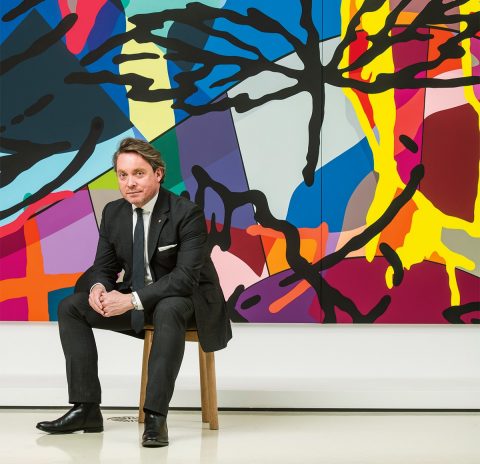
Image Credit: Eugene Hyland
* * *
68/100: Liane Moriarty
Author of bestsellers including Big Little Lies, Nine Perfect Strangers and Truly Madly Guilty
Did you always want to write? I’ve written stories from when I was a small child. My younger sister loved to write, too, and my father encouraged us by “commissioning” us to write novels for him. Although I occasionally wrote short stories and first chapters of novels that didn’t go any further, I let my childhood dream of becoming an author slide – until I learnt my sister’s first novel had been accepted for publication. In a fever of sibling rivalry I wrote a children’s book, which was rejected by every publisher in Australia. I calmed down and two years later my first novel, Three Wishes, was published.
You’ve now sold millions of books around the world. How does that feel? It doesn’t feel real. What I find most thrilling is seeing people reading my books. It first happened on a Sydney ferry –I sat next to a woman who pulled my debut novel out of her bag. All these years later it still gives me goosebumps.
Why is telling women’s stories important to you? Women’s stories give me the most pleasure to read and to write. I’ve had many women tell me that my books gave them comfort and distraction in difficult times.
What’s it like seeing your work adapted for the screen? Strange, surreal and wonderful. I was lucky that the producers of Big Little Lies made it such a fun and fascinating experience.
Is there a story you’d like to try and tackle? I’ve always had a secret desire to write about an alien invasion.
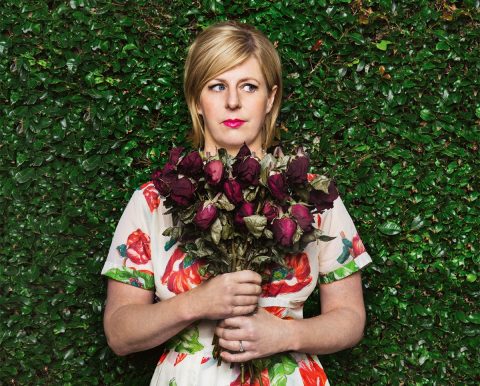
Image Credit: Nic Walker
* * *
69/100: Megan Davis
Pro vice-chancellor Indigenous and professor of law at the University of NSW
“I used to devour books,” says Megan Davis. “We had no money but every spare cent we had, Mum would spend in the secondhand bookstore.” Home sick from school one day, Davis read a book on the 1975 double dissolution of the Whitlam government. “I still have that book with my little scribbles from grade six in the back,” she says.
Though her white single mother raised her – and passed on her love of Australian history and politics – having an Aboriginal father showed Davis the inequalities of the judicial system. “I grew up with an Aboriginal family and community so I was acutely aware of the ways that the law can oppress and the ways the law can redeem.”
She went on to study law at the University of Queensland (“There weren’t many Aboriginal law students and there certainly weren’t any Aboriginal law academics”) and has since had a peerless career as a constitutional lawyer and academic. You’d also be hard-pressed to find a bigger Rugby League fan; Davis is an avid supporter of the North Queensland Cowboys and sits on the ARL Commission.
In 2017, Davis read the Uluru Statement from the Heart at the National Constitutional Convention. A consensus formed across Indigenous communities after two years of dialogue, the statement calls for reform, including constitutional change and a First Nations Voice in parliament.
To this day, Aboriginal and Torres Strait Islander people are not mentioned in Australia’s constitution. “It’s always been striking for me that my grandmother was moved off country in 1901 at the same time that the constitution I studied came into being,” says Davis.
“I feel really privileged to be able to use my experience and position now to give back to the community. That to me is everything.”
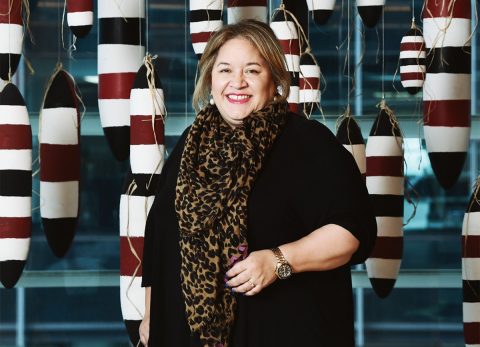
Image Credit: Peter Braig
* * *
70/100: Simon Fenech
Operations manager of Fruit2Work and author of Breaking Good
“It doesn’t matter where you are in life, you can make a mistake and lose your way,” says Simon Fenech. “But you can always find your way back.”
The way back was a long and difficult road for Fenech, who suffered a workplace injury as a delivery driver in 2008. That injury led to a life-changing decision. Unable to find relief with prescription medications and physical therapy, he resorted to methamphetamine to ease his chronic pain. “After nine years of training in kickboxing, I really thought I had self-control,” he says. “But from the very first time I tried ice, I was addicted.”
The following years saw him fall into drug addiction and criminal activity until he was sentenced to 12 months in prison in 2016. “All I could think of was getting my kids back in my life – that was my goal,” he says of using the time in jail to rehabilitate.
After his release, Fenech struggled to find a job – “As soon as employers saw I had a criminal record they closed the door on me” – but his life changed again when he was hired by Melbourne delivery service Fruit2Work, a social enterprise that offers employment opportunities and peer mentoring to people with a criminal record. “Being able to receive a pay packet, to wear a high-vis uniform again, I didn’t feel like a criminal anymore and I was able to start rebuilding my life.”
The 46-year-old father of three is now the organisation’s operations manager and helps guide a new group through the program, which boasts a zero recidivism rate, every six months. “All I want to do is give someone the opportunity I had.”
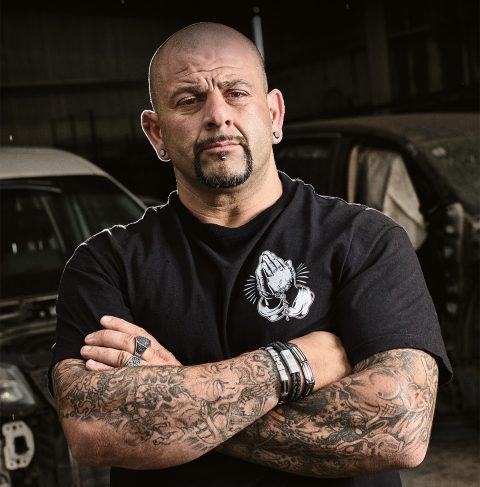
Image Credit: Luka Kauzlaric

Travel inspiration and destination guides, plus tips and hacks, straight to your inbox

Discover where you want to go next: trending destinations, new openings and our favourite places
